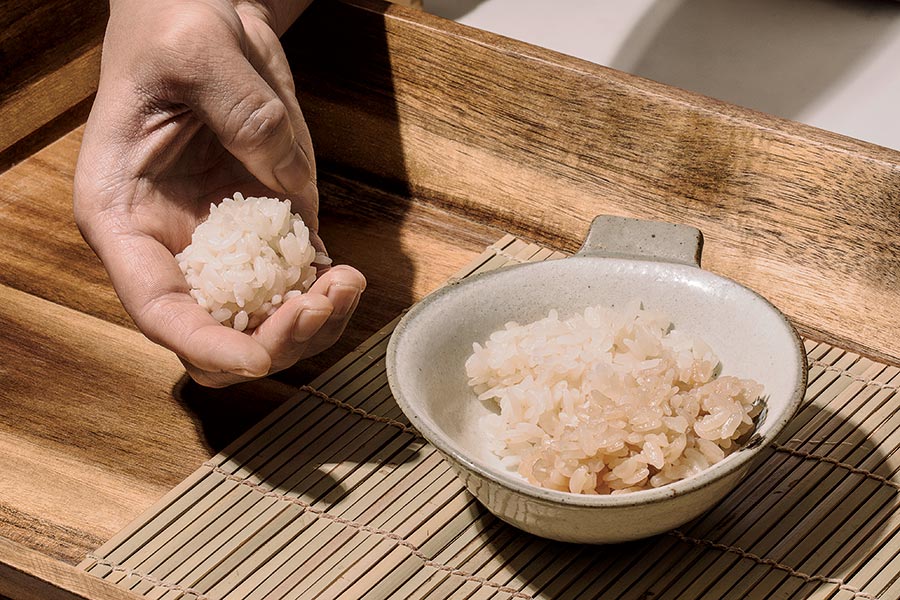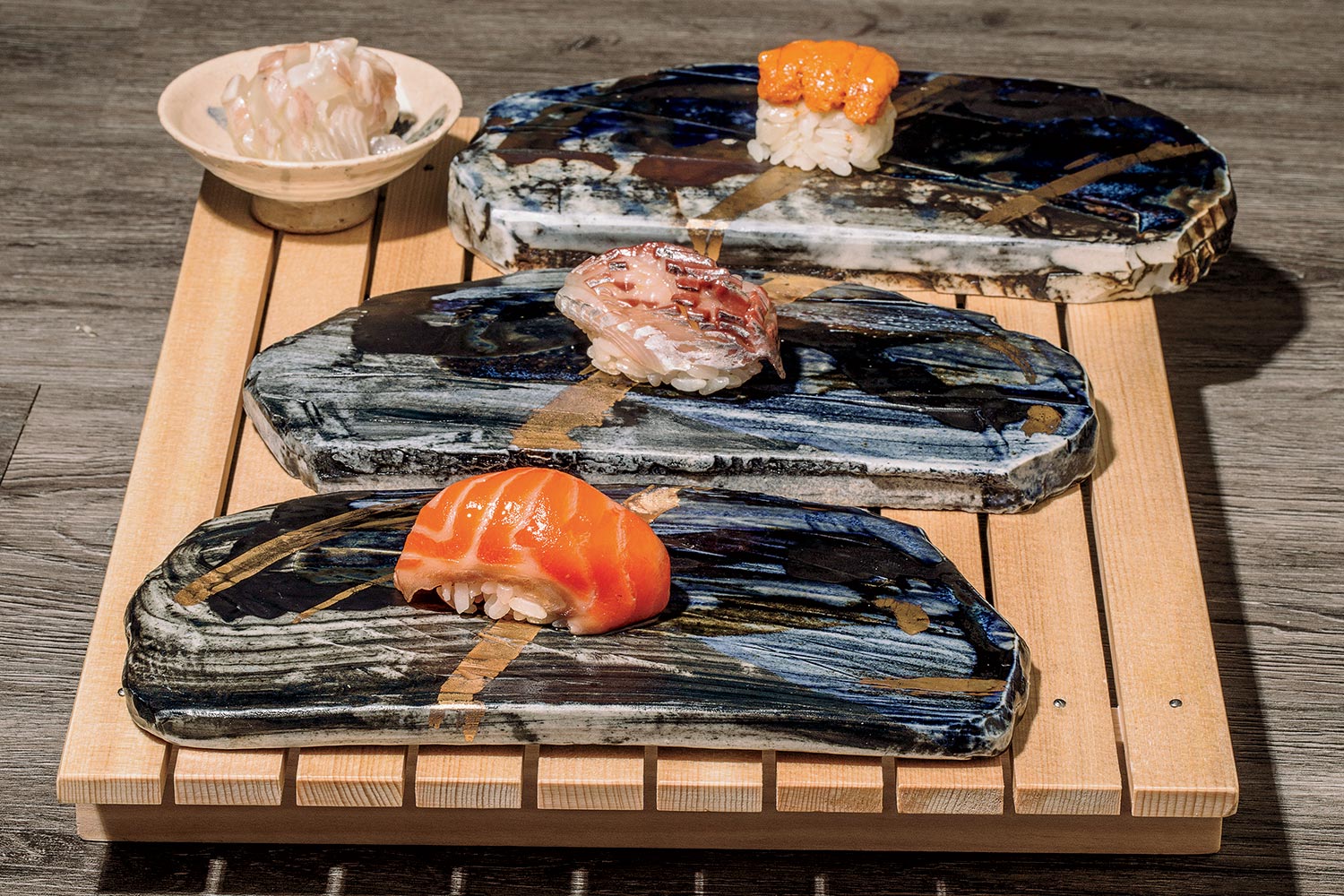Dear Otto Phan: Welcome to Chicago. You’ve made yourself quite at home. The first I heard of you was in that article in the Trib last May. Remember the one? While promoting Kyōten, your soon-to-open $220-a-pop omakase restaurant in a tiny Logan Square storefront, you said, “There’s no good sushi in Chicago.”
Anyone expecting you — a chef from Austin, Texas, no less! — to prostrate yourself to receive the inevitable backlash got no such satisfaction from your follow-up interview on Eater a few months later. “I feel sorry about that,” you said of your earlier comment. “I should have said that sushi in Chicago IS BAD.” You definitely have the Big Shoulders thing down pat, to say nothing of your balls.
But I liked you instantly. Because you’ve got a point: Chicago is the only Michelin-starred city without a Michelin-starred sushi restaurant. We’ve only recently emerged from the dark ages of by-the-book rolls and recovered from the 12-ingredients-and-a-blowtorch excesses that followed. Yes, standouts like Juno and Kai Zan point to a simple but inventive approach closer to what the masters are doing elsewhere, but not even their biggest fans would call either experience transcendent.
What this town needed, you surmised, was an auteur, a student of sushi with the chops to build something iconic and grab the ring once and for all. Where, you asked, was Chicago’s Masa? Then you promised to bring it to us in the form of Kyōten — and you hoped we were ready.
I was. I paid my $100 deposit and scored a spot at your tiny L-shaped sushi counter for the early seating on a recent Tuesday night. Calling the room “minimalist” is too generous. It was bare. And yet the lack of decor somehow boded well, evoking the blank sushi temples of my Tokyo dreams, where the food always comes first. My six fellow customers were quiet, hanging on your every word and gesture. And you were in fine spirits behind the bar, whether grating fresh wasabi from a root the size of a small tree trunk or explaining how your approach to sushi is rooted in the Edomae tradition, which entails curing and marinating the fish to achieve new levels of umami.

Then you started in on the rice. Lord, I wish my wife looked at me the way you look at your rice. It’s a large-grain variety, you explained, that you discovered while eating at a restaurant in Fukuoka. “No one in the U.S. uses it,” you boasted while casually moving it from rice cooker to bowl. Then you seasoned it with aged red vinegar. Caressed it. Stared at it longingly. Later I’d learn that it’s called inochi-no-ichi.
I found it all a bit silly — until you placed the first offering of your 20-course omakase on a striking marble slab made by artist Ian McDowell. In each course, the rice was enormous, both physically and metaphorically, every fat grain its own pronouncement. Rather than acting as a bland pillow for the third course’s precious lean tuna, which was cured in salt and sugar and smoked for three hours, the pungent rice handled the fish’s delicate oils better than what we’re used to.
For the next two hours and 15 minutes, you talked and taught and sliced the most beautiful fish with the sharpest knives. You gently dabbed amadai, a watery tilefish considered a luxury in Japan, with caviar and mascarpone. You smoked deep-flavored katsuo (skipjack tuna) over Japanese charcoal and alder wood and then ladled on a daikon-ponzu sauce. Some touches were glamorous, like when you marinated the red snapper in Japanese fish sauce and olive oil and fashioned it into a rose. Others were simple, such as scoring the silvery aji (horse mackerel) so it would cling to the shimmery rice. Your sake list’s unusual selections, such as a funky, unpasteurized Amabuchi Ichigo that looked like brandy and smelled like a strawberry Fruit Roll-Up, dovetailed beautifully with the meal’s smokier flavors.
And to your great credit, Mr. Phan, you didn’t take it all too seriously. When you presented the tamago, that cooked-egg staple I have been conditioned to think of as filler, you remarked that it actually takes years to master, but you weren’t preachy. “You have two choices,” you said. “You can mess it up for two years or learn from a great master. I messed it up for two years. But either way you will suffer.” Yours was silky and moist, less an omelet than a sponge cake. Before the meal ended, you asked if anyone was still hungry and cheerfully diced leftover bits of fish to make hand rolls.
You know you’re good. But will Michelin come calling? I can pinpoint only three possible critiques they might make. One is the meal’s intimacy, which feels claustrophobic at times. (Call me a misanthrope, but communal dining has never been my thing.) If guests just want to eat and be left alone, they may not relish all the together time with strangers — or with you, as fascinating as you may be. Two is the service, charming but hardly elegant. (It basically consists of you putting sushi on my slab and a server taking the slab away and pouring water.) The third is the price tag, which will scare off more than a few of the locals you’re seeking to convert. That said, I don’t know what you’re paying to import your rice and fish, but to this local, it’s worth the expense. Plus, extra dollar signs have never dissuaded the average Michelin inspector. Keep it up and they’ll give you your star, and perhaps more than one.
After my meal, I found you checking your phone and taking a break in the entrance. We shook hands and you thanked me for coming. Then you walked back into the restaurant for the next seating, which would begin in 15 minutes. It was an uneventful interaction, but I’ll remember it, because that was the first time in ages I could recall a chef delivering exactly what he promised. Mr. Phan, you have brought great sushi to Chicago.



